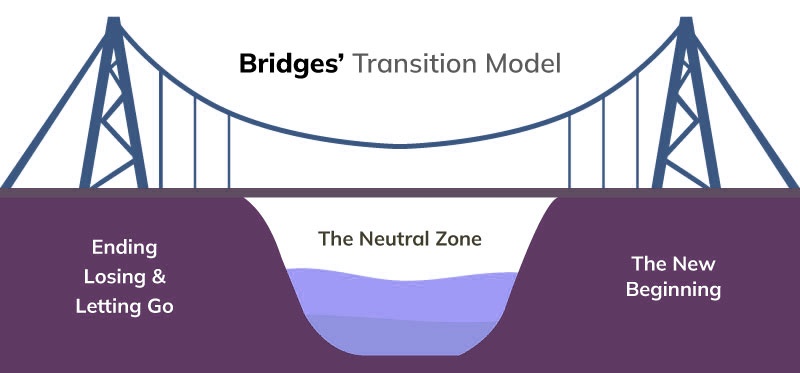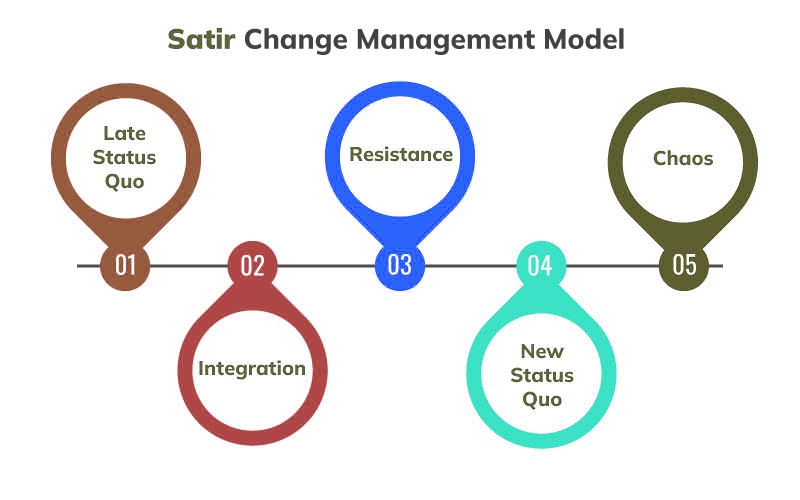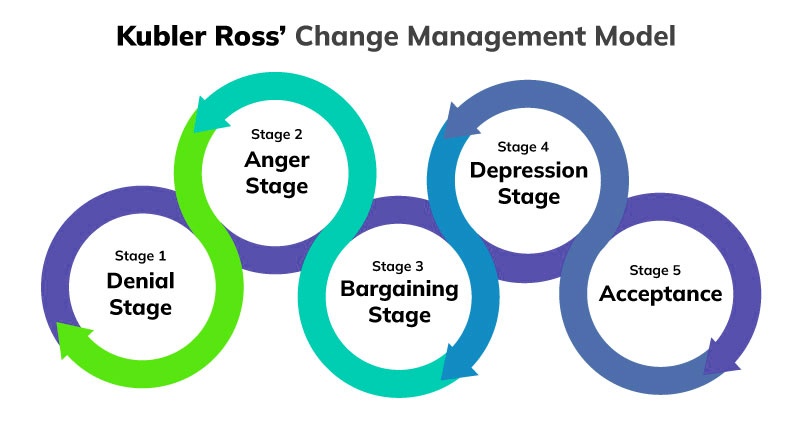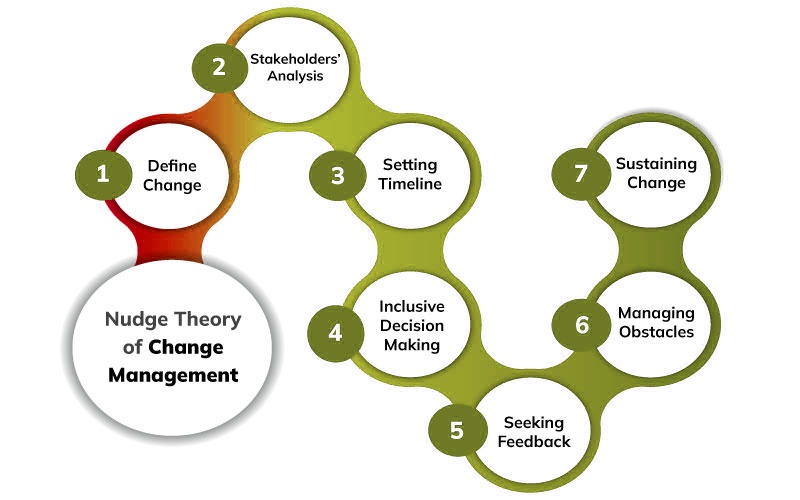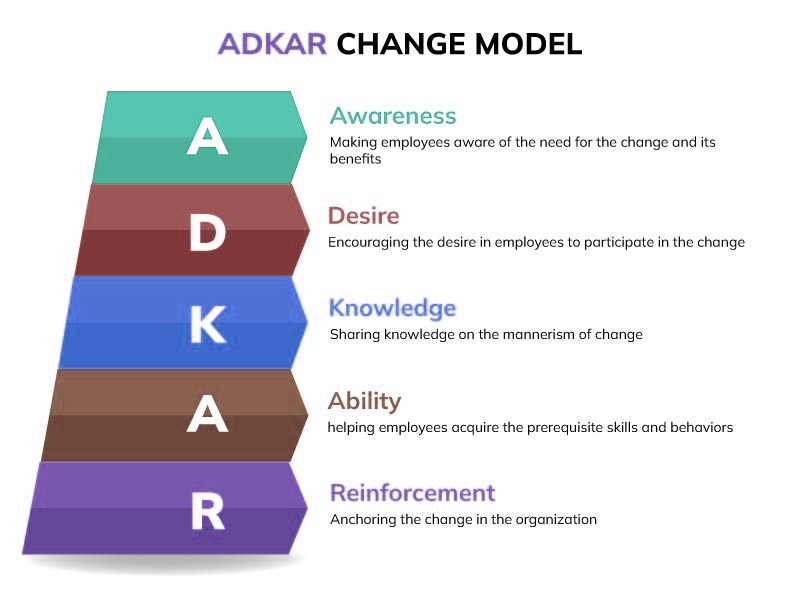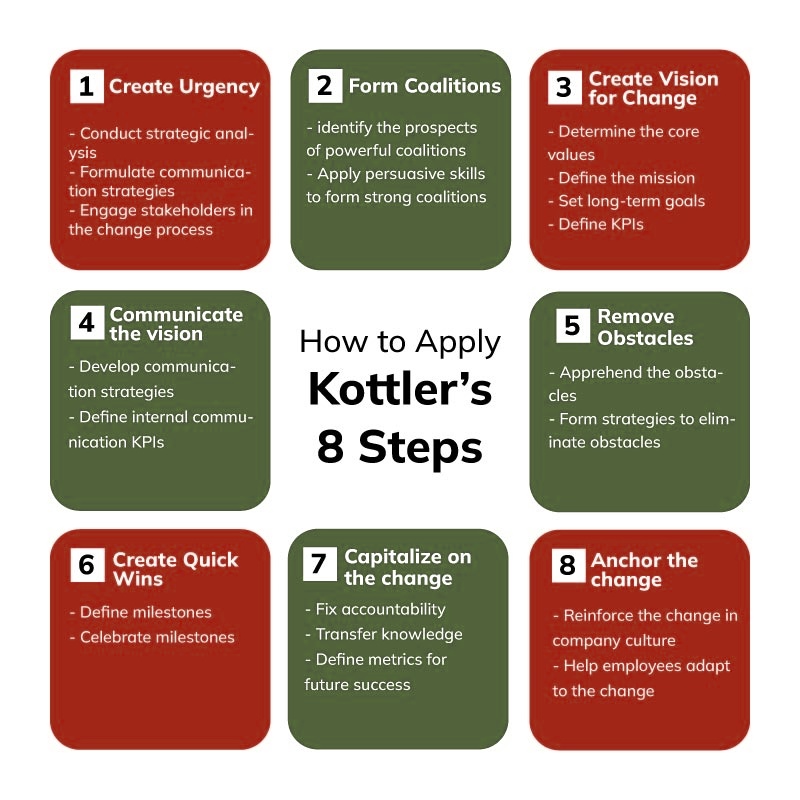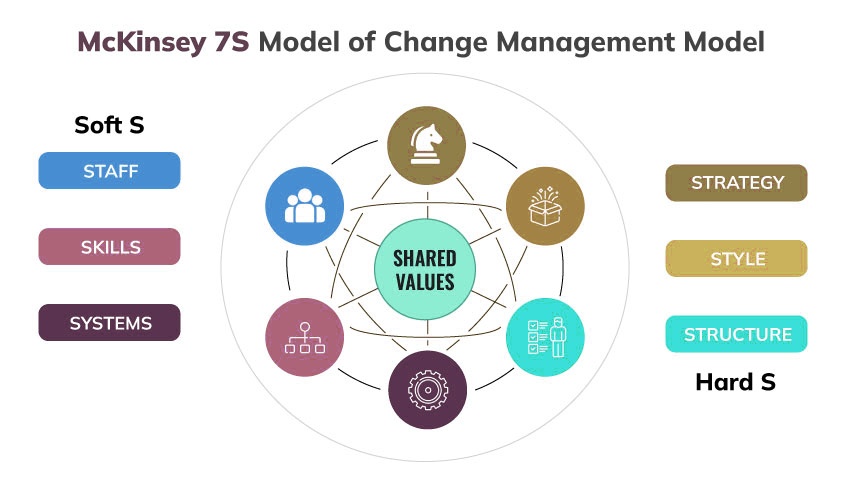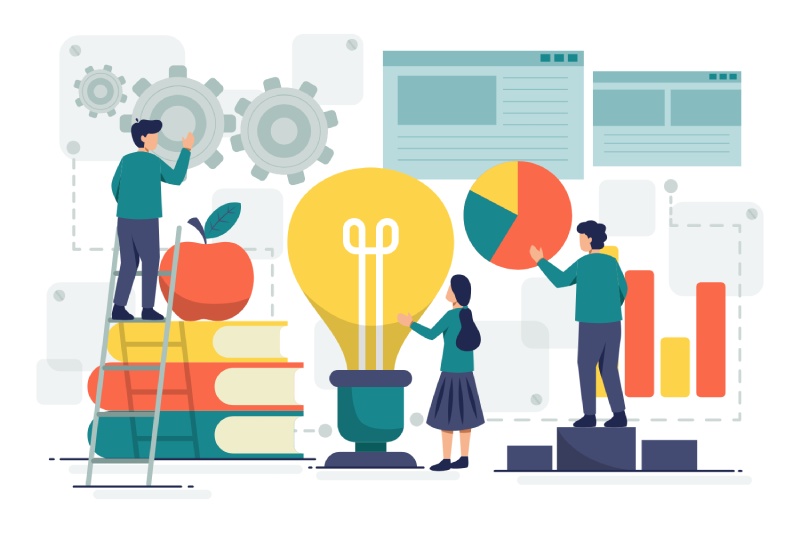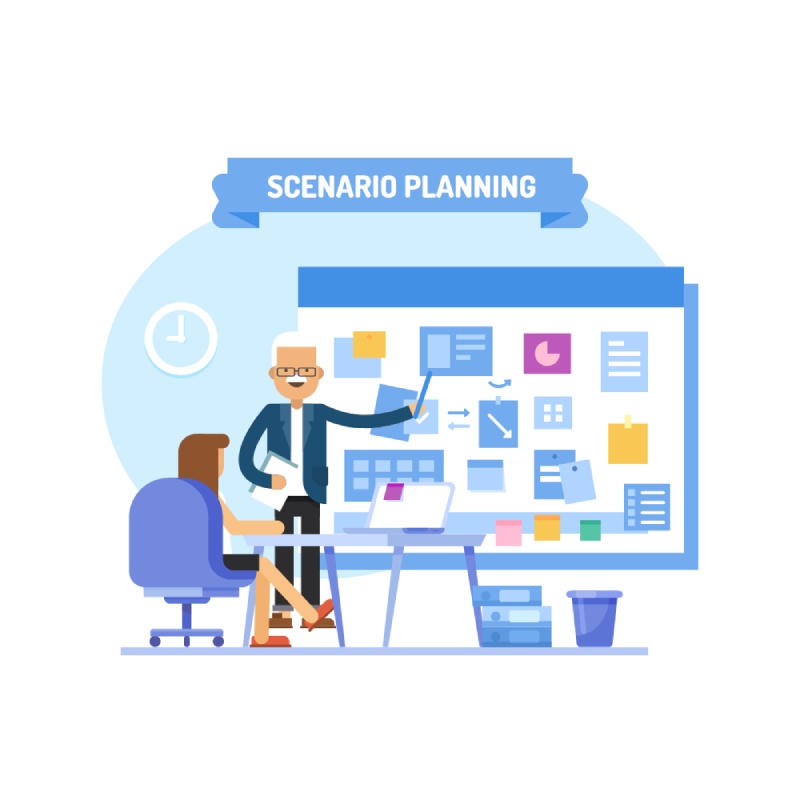Overview of the model
William Bridges is one of the most renowned and reputed change consultants the world has ever seen. In 1991, he put forth the Bridges’ Transition Model in his book titled ‘Managing Transitions.
The model is primarily based on the central idea that employees are often uncomfortable with change and that discomfort drives them to resist change. Therefore, the model suggests that the feelings of employees throughout the change process should be understood to guide them with the change and offer support to them. As per the theories of this model, such understanding of feelings and emotions is essential to help employees accept the change.
Furthermore, similar to Lewin’s model, this model also categorises the process of change into three major stages. These stages include the following.
- Ending, losing, and letting go: This is the initial stage wherein people are introduced to the idea of change and are mostly resistant to it. The emotions of fear, resistance, denial, annoyance, and sadness are predominant among employees.
- The neutral zone: In this stage, people who are going to be directly impacted by the change have a high degree of uncertainty and doubt with respect to getting along with the change. By this stage, employees may begin to feel added pressure trying to catch up with the pace of new working mannerisms and processes. Employees may feel that their morale and productivity have started to decline as they try to adjust to the change initiative.
- The new beginning: The final stage in the model corresponds to the acceptance of the change. By this time, employees start to find their comfort with the change process and also begin to embrace the same. They also show commitment and engagement to acquire new skills and knowledge they need to align with the change. Besides, in this stage, employees experience high levels of energy and enthusiasm to be open to learning.
Furthermore, understanding the application of the Bridges’ transition model will offer further insights into how each stage in the model is to be implemented.
Application of Bridges’ Transition Model
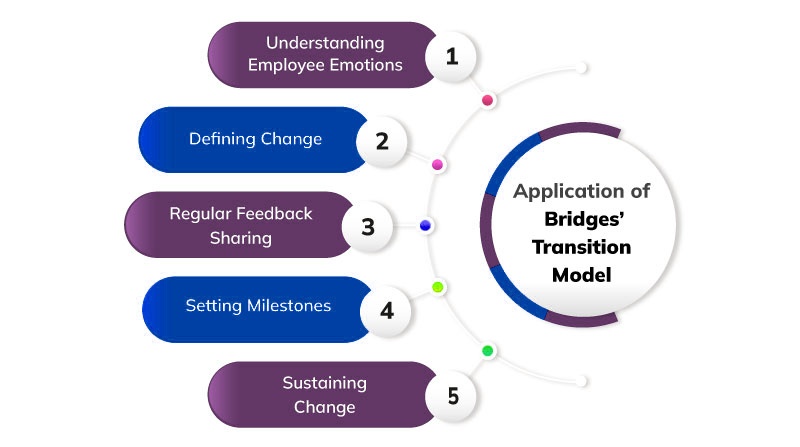
- Understanding employees’ emotions: As per the model, the first thing that the top management needs to do is understand the feelings of employees and show acceptance of their resistance. Leaders should be empathetic and there should be open communication such that employees can express their emotions. The work environment should be positive enough for employees to be able to express their emotions and feelings in front of their superiors.
- Defining the change and educating employees: The major reason why employees are resistant to change is that they do not understand the change in its entirety and may lack the knowledge. So, the leaders and project managers heading the change should firstly define the change clearly. Thereafter, they should educate employees on how they can use their existing knowledge, skills, and experience to embrace the change. Also, they need to be educated on the positive aspects of the change and how it will create a better future. Also, when the change is defined by the change managers, they should also convey the vision, core values, and long-term goals associated with the change. Besides, it is also imperative to define the key metrics for measuring the success of the change. Clarity and transparency will hold the key to defining the change in a manner that it inspires everyone to be onboard.
- Share regular feedback: In the neutral state as per the Bridges’ Transition Model, employees are in doubt, unsure, and confused with respect to the change process. This is where leaders and managers need to step up and share regular feedback with employees. Feedback sharing will guide them for greater quality and understanding of the processes linked with the change.
- Setting quick wins and milestones: The next step in applying the model is to set short-term goals and celebrate all these wins to revive the morale of the team and to inspire employees to participate in the process of the change and make vital contributions. Celebrating quick wins will take the pressure off the employees and will also absorb their doubts and anxiety. Besides, leaders should give positive affirmations to employees backing them to make positive contributions to the change process.
- Sustaining the change: After employees have aligned their personal interests with the change process, measures need to be taken to standardize the change. As explained above, in the third stage of the model the energy and engagement of employees are high. The same needs to be channelized in a positive way to sustain the change and set accountability with respect to taking the change forward within the organization. For sustaining the change, the organization may need its employees to engage and upskill. Also, for driving constant improvements in the change, it may be required to invest in new technologies and expertise. Change managers need to analyze the present state and clearly define the prerequisites for imbibing the change in the organization and taking it forward.
Bridges’ Transition Model example taking Attlasian’s case
Atlassian is an Australian-American software company that has its headquarters in Sydney. The company was incorporated in the year 2002 and in April 2021, the company brought a massive change in its operations. Atlassian announced its ‘Team Anywhere’ policy under which its employees can work from anywhere in the world. To add, as per this policy, employees at Atlassian need to report to the physical office only 4 times a year. Needless to say, this is a massive strategic transformation in the context of the organization. Let’s analyze how this change was facilitated using the Bridges’ transition Model.
- Understanding employees’ emotions: The employees at Atlassian had mixed emotions about a permanent work from home policy being introduced. Leaders were empathic to understand the emotions of employees and openly discuss the need for the policy.
- Defining the change and its benefits: The top management at Atlassian then defined the massive digital transformation occurring in the organization. Further, the project managers explained to their team members how their present skills will facilitate permanent work from home and how the company had already invested in digital technologies. Thereafter, the management explained the key benefits of a permanent work from home policy to employees and other stakeholders. These employee benefits were explained in terms of better work-life balance, time efficiency, and savings in terms of commuting expenses. To the management, the change leaders explained the benefits of better employee productivity in remote work, lowered operational costs, and other merits.
- Sharing regular feedback: To clear employees’ apprehensions and doubts linked to the transition, project managers shared regular feedback with their team members and extended support to them. Strong feedback mechanisms along with performance indicators linked to remote work efficiency were introduced. The feedback and guidance related to how employees can enhance their productivity in remote work and how they can effectively communicate with their team members when working in a virtual team. Feedback with respect to the more effective use of remote working tools was also shared.
- Setting quick wins: Setting milestones and small wins helped the leaders and project managers to keep the morale high and the momentum going. Project managers celebrated the success of completely remote projects and discovered ways to extend employee recognition in a virtual work environment. These wins were highly fruitful in enhancing employee motivation and productivity.
- Sustaining the change: The top management and project managers at Atlassian then realized the skills, transfer of knowledge, and resources that needed to be allocated to sustain the change in the future and make it successful. Various remote project management tools, communication tools, virtual collaboration skills, and other performance management tools were required to manage permanent remote work and boost remote employees’ efficiency. To sustain the change, Atlassian management invested in new technologies, provided remote training to employees for effectively using these tools, and planned virtual employee engagement strategies.


